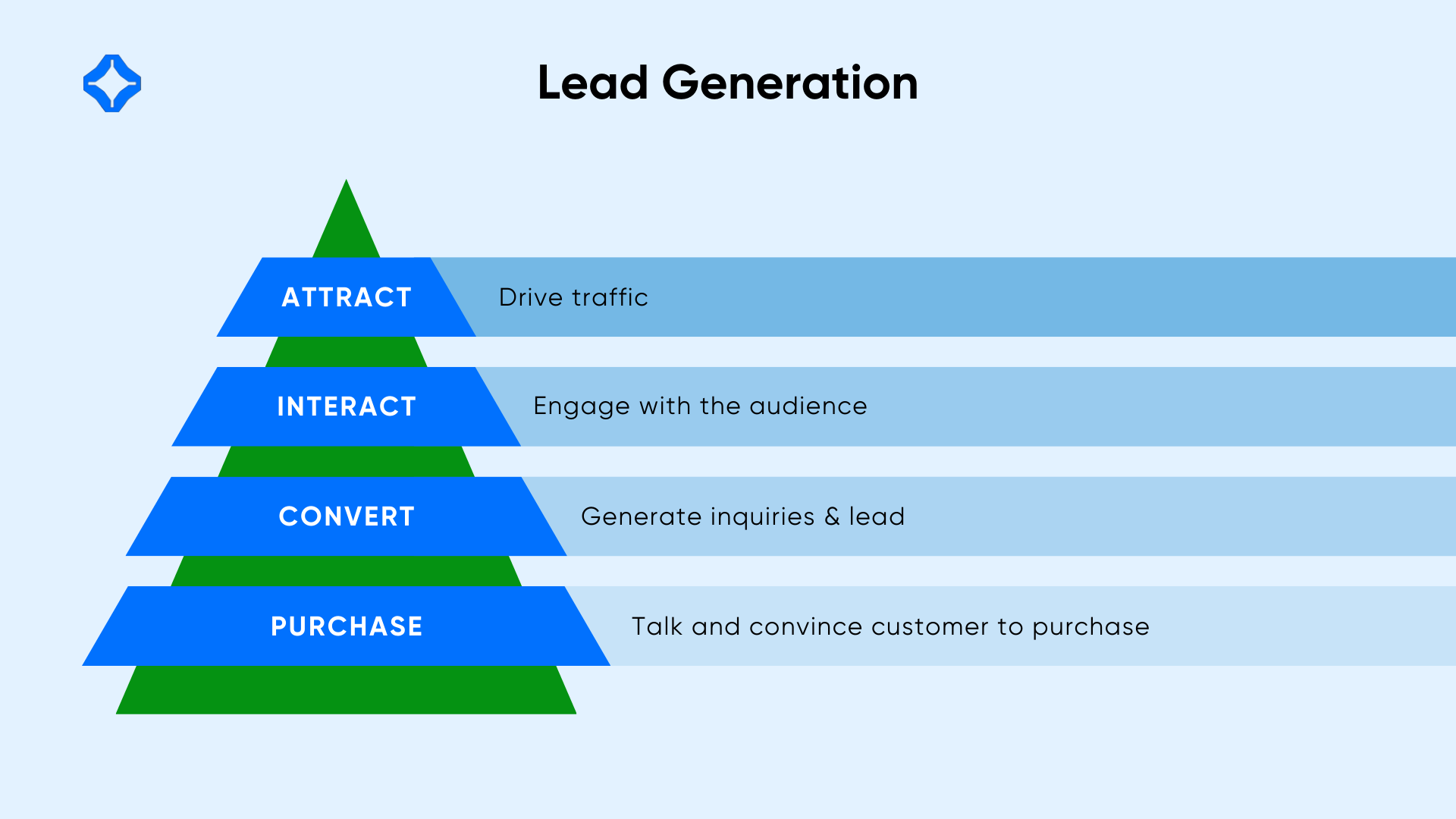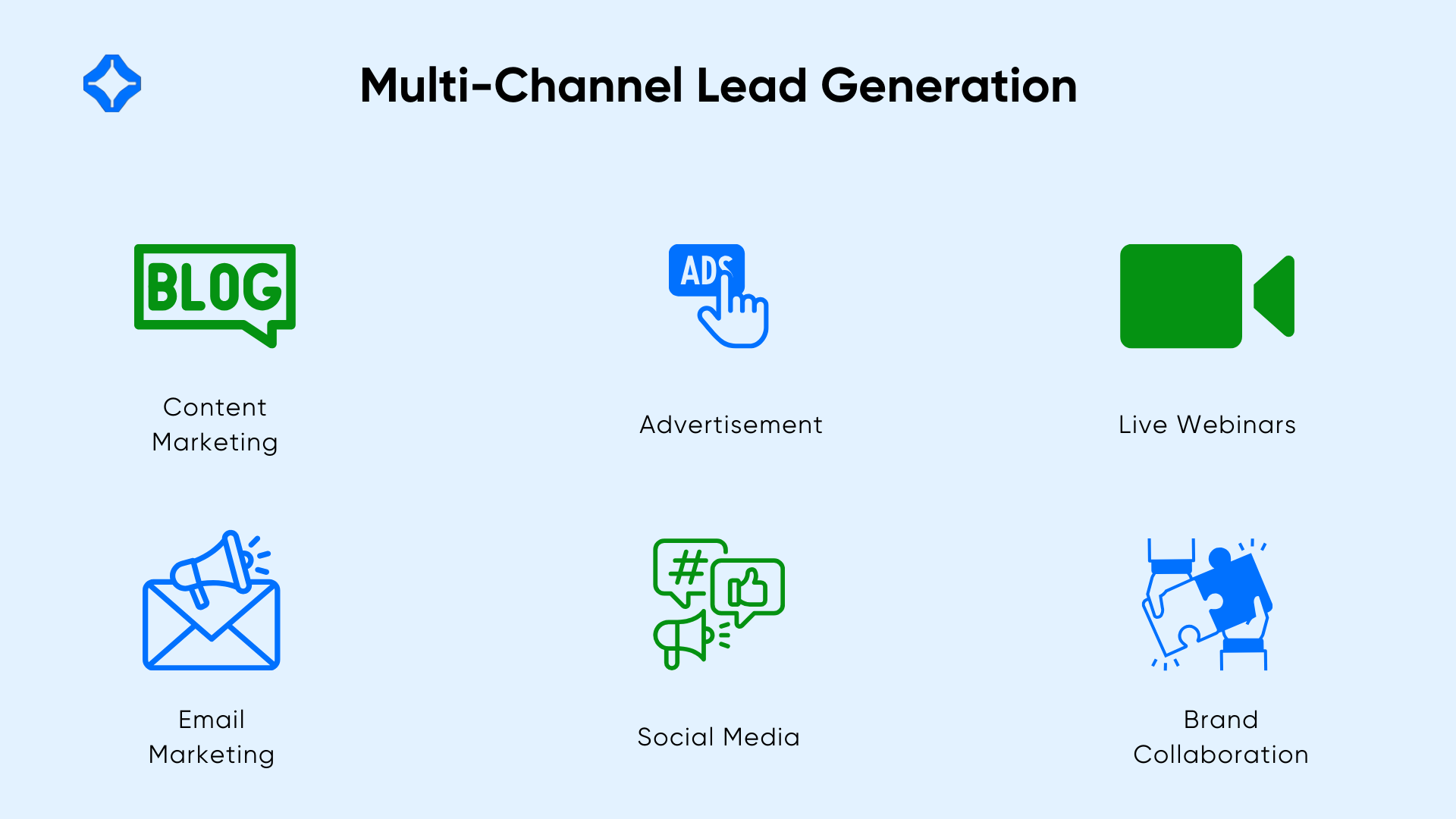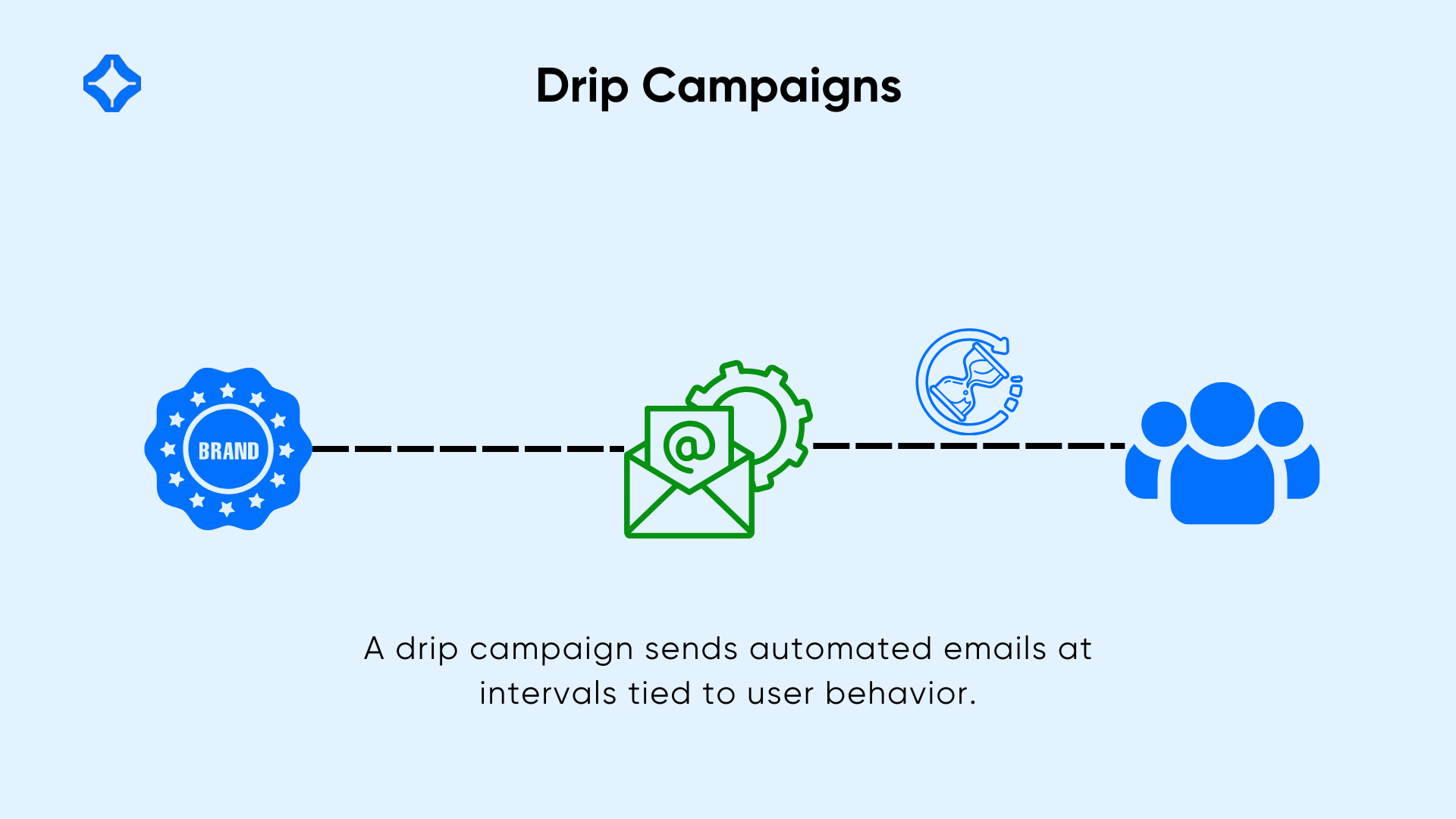
Lead generation is the process of finding and engaging potential customers who can become potential buyers. It forms the backbone of successful sales efforts, ensuring that teams reach the right audience at the right time. As technology advances, businesses must adapt their methods to remain competitive. Old tactics may no longer work, so teams need modern strategies that align with today’s fast-paced market demands.
Below, we explore modern strategies, from defining your target market to using automation tools. These steps will help your team find promising leads, engage them at the right time, and guide them through the pipeline with minimal friction.
Identifying Your Target Audience
Pinpointing your ideal buyers prevents wasted effort. When you understand their traits, challenges, and goals, you can create offerings that feel relevant to buyers. Customizing your message puts you ahead of competitors who rely on generic appeals.
Developing Ideal Customer Profiles (ICPs)
ICPs define the qualities of companies or individuals that suit your solution. These profiles often include industry type, company size, budget range, and major pain points. They offer a clear picture of who benefits most from your product.
Gather data from market research or your top customers. Observe shared traits, key struggles, and typical buying cycles. Summarize these findings in a document for your sales and marketing teams. When everyone knows the specific type of lead to pursue, outreach becomes more effective.
Creating Buyer Personas
Buyer personas examine the human perspective. They explore personal roles, daily tasks, and motivations within a business. This personas matters because each stakeholder might value different features.
Craft personas by talking to real buyers. Ask them why they chose your product or what problems they faced. Then, transform that info into fictional, yet realistic, profiles. Include details like job title, goals, and communication styles. Sales reps use these personas to customize pitches that match the persona.
Segmenting Customers for Specialized Outreach
Not all leads fit one type. Some might be startups seeking quick wins, while others are large enterprises with strict procedures. By segmenting your audience, you can customize messages or offers for each group.
Review your ICPs and personas to categorize leads. Maybe startups receive content about fast deployment, while enterprises see materials about long-term ROI. Segmentation keeps your funnel efficient and addresses different mindsets.
Leveraging Multi-Channel Lead Generation Strategies
Relying on a single channel can limit reach. By spreading efforts across various platforms, you can reach wider. People absorb information in different ways, so a diverse approach ensures you connect with leads wherever they spend time.

Content Marketing
Informative content draws qualified traffic and sparks interest. Blog posts, videos, and ebooks that solve problems can lure interested buyers. They appreciate insights that address real concerns, building trust in your brand.
Stay consistent with content posting schedules. Focus on topics that align with your solution’s value. For a project management tool, write about cost control or remote collaboration. Always include a call to action that nudges readers toward the next step, such as joining an email list.
Social Media Engagement
Social platforms extend your reach to a broad audience. B2B brands often lean toward LinkedIn for professional discussions. Meanwhile, B2C companies might find success on Instagram or Facebook.
Keep posts relevant and interesting to buyers. Respond quickly to comments to show that you value open communication. Social channels also serve as listening tools. You can spot emerging trends, watch competitor moves, and connect with potential buyers in a casual format.
Email Marketing Campaigns
Email is still a top performer for engaging leads. Personalized messages lead to better open rates than generic techniques. Divide your contact lists by persona, past behavior, or areas of interest. This segmentation helps you send relevant material.
Subject lines should be short and compelling. The email body must highlight key benefits, followed by a direct call to action. Automated drip series can nurture contacts who need more time before deciding. This steady communication builds trust over weeks or months.
Webinars and Live Workshops
Events that allow real-time interaction can be powerful. Webinars or online workshops let your team explain product features, address questions, and gather feedback. Attendees often have an active interest, which boosts the quality of leads.
Plan each session around a specific pain point. For example, a SaaS company might run a workshop on scaling user management. Market the event on social media and through email. Afterward, follow up with attendees to keep the conversation going.
Strategic Partnerships and Co-Marketing
Joining forces with another business can open doors. If their audience overlaps with yours, you can share leads through co-branded events or joint content. Each partner benefits from expanded visibility without major costs.
Vet potential partners thoroughly before collaborating. Make sure their reputation aligns with your brand. A well-coordinated campaign like a shared ebook or combined webinar can attract leads who see the sync between two trusted names.
Implementing Lead Scoring and Qualification
Once you have a steady stream of leads, the next step is sorting them by potential. Not all prospects are ready to buy. A structured approach to scoring and qualification directs your team’s focus.
Establishing Lead Scoring Criteria
Lead scoring assigns a numeric value based on traits or actions. Frequent site visits, email clicks, or the correct job title might raise a lead’s score. High-scoring leads often need timely contact, while low-scoring ones may require further nurturing.
Pick your scoring factors carefully. Involve the sales and marketing team so criteria match real-world conversion patterns. Keep your lead score model straightforward. If it’s too complex, your team might ignore it or become confused.
Aligning Sales and Marketing Teams
Sales and marketing must work together seamlessly. Without collaboration, you risk disagreements on what defines a good lead. Marketing might push leads that sales consider unqualified, causing wasted effort. Using remote project management, sales and marketing teams can collaborate effectively on lead generation strategies.
Hold regular check-ins to discuss lead feedback. Marketing can adjust their campaigns if leads show little interest in certain content. Meanwhile, sales can refine pitches based on marketing insights. This shared process keeps both sides in sync.
Common Pitfalls in Lead Qualification
Mistakes occur when teams overestimate or underestimate leads. For example, a lead might open marketing emails but never show real buying intent. Relying on shallow signals can inflate scores.
Monitor your scoring method for false positives. Look for patterns in deals won or lost. If a lead’s behavior rarely translates into a sale, adjust your scoring weights. Keep refining until your system consistently flags strong potential buyers.
Utilizing Technology and Automation
Manual tracking of leads can consume time. Modern software tools simplify data collection, communication, and follow-up tasks. They also boost accuracy and free your team to build relationships.
CRM Systems
A CRM is a central repository for contact details, interaction records, and deal progress. It offers a unified view of the buyer’s journey. Representatives can see if someone has opened emails, attended webinars, or requested a demo.
When assessing CRMs, choose one that supports customizable pipelines and real-time reporting. Check integration with your marketing platform, too. This alignment prevents duplicate records and keeps everyone informed.
Marketing Automation Tools
Automation reduces repetitive tasks, such as sending welcome emails or lead-score updates. The system can trigger specific messages once a contact hits certain milestones, like downloading an ebook.
Select tools that connect seamlessly with your CRM. Unified data ensures fewer errors and a consistent customer experience. Many tools also offer analytics, letting you compare one campaign against another to see which yields better results.
AI-Driven Lead Generation Approaches
Some teams use predictive models to spot patterns in lead behavior. These methods can flag leads that are likely to buy based on large data sets. While these solutions may speed up identification, they need accurate, relevant data to avoid skewed results.
Test AI models on smaller groups before full deployment. Observe the quality of leads flagged. If AI performance looks strong, expand usage and keep refining the algorithms. Always verify that human oversight remains part of the process since data alone might miss subtle signals.
Monitoring and Analyzing Performance
Continuous improvement relies on data. By tracking the right metrics, you learn where to focus budget or how to refine messaging. Accurate insights help your team grow lead flow and enhance quality.
Key Metrics to Track
Cost per lead reveals how much you spend on acquiring a single contact. The conversion rate shows how many leads become paying customers. Other valuable metrics include the lead-to-opportunity rate and the average time to close a deal.
Marketing campaigns also have unique indicators, such as email open rates or webinar attendance. Tracking these patterns spots what captures attention effectively. If a campaign underperforms, revisit content or target channels.
Continuous Improvement Strategies
Lead generation is never a static strategy. Buyer behaviors shift, competitors evolve, and technologies emerge. Regularly review metrics to detect dips or spikes. Make small, data-backed changes, such as modifying your landing page.
Promote a culture of testing across teams. Encourage representatives to try different outreach scripts while marketers experiment with new email layouts. Document each outcome to track lessons learned. Over time, you’ll uncover the formulas that produce the highest-quality leads.
Adapting to Seasonal Trends and Market Fluctuations
Some industries face cyclical ups and downs. Retail businesses might see surges in holiday months. B2B firms could notice slow summers but busy budgets at year’s end. Adjust your lead generation plan for these shifts.
Boost targeted campaigns during peak demand periods. If a slower season comes, focus on nurturing or pipeline building for the next upswing. Stay flexible and watch out for sudden market changes. Quick pivots can keep your funnel strong, even in uncertain conditions.
Lead Nurturing Tactics
Not all leads will buy right away. Effective nurturing keeps your brand top of mind. It also addresses concerns that might stall a purchase decision.
Drip Campaigns for Deeper Engagement

A drip campaign sends automated emails at intervals tied to user behavior. These messages gradually educate leads about your product or highlight success stories from current customers. Every interaction strengthens brand recognition.
Make every email short and actionable. Insert a clear link for the next step, whether it’s scheduling a demo or downloading a guide. Keep the tone friendly, don’t force the message. Overloading leads with messages can push them away.
Personalized Follow-Ups
Generic follow-ups may feel impersonal. When a lead downloads a whitepaper on a specific topic, reach out with related use cases. Show that you remember their interests and value their time.
Sales reps can reference details from past interactions. If a prospect once mentioned a budget constraint, mention cost-saving strategies. These personal notes foster trust and show genuine interest in helping them solve problems.
Structuring Content for Search Visibility
Using a headless CMS for eCommerce allows marketers to optimize content for search visibility and lead capture. Unlike traditional CMS platforms, a headless CMS separates content from the frontend, allowing teams to optimize metadata, implement structured data, and create SEO-friendly URLs without design constraints.
Building Trust and Credibility
Leads evaluate more than features and pricing. They consider your reputation, values, and track record. Building trust can set you apart when buyers compare multiple options.
Showcasing Social Proof and Testimonials
Positive feedback from actual clients builds immediate credibility. Post short quotes on your website or share case studies detailing how your solution solved a real challenge. Authentic success stories go a long way toward easing doubts.
Include specific metrics if possible. For example, a client might mention a 20% jump in leads after implementing your software. Hard data backs up claims of value. Leads see concrete outcomes instead of mere promotional claims.
Thought Leadership Content
Articles, videos, or podcasts that discuss industry trends can establish your brand as an authority. When you offer insights that educate others, your credibility rises. Leads may trust your solution because they trust your expertise.
Share these pieces across channels. Encourage discussions in comment sections or social media threads. Engaged readers often ask questions, creating more chances to connect and explain how your product fits their needs.
Overcoming Common Hurdles
Lead generation can be complicated. You might face privacy rules, misalignments between teams, or competition from bigger brands. Overcoming these obstacles demands organized planning and frequent evaluations.
Data Privacy and Compliance
Many regions enforce strict guidelines on handling personal information. Be transparent about data collection and use. Show leads how they can opt out or request changes.
Compliance also protects your reputation. Mishandling data can harm trust and cause legal trouble. Design your data flows around current regulations, and stay vigilant for any new rules.
Managing Cross-Channel Consistency
Using multiple platforms can create confusion if the message varies too much. Keep brand tones and visuals uniform. A consistent style helps leads recognize your business wherever they encounter it.
Sync content calendars so that major announcements happen in unity. Social, email and blog updates should reinforce each other. This unity speeds up brand recognition and prevents conflicting details.
Balancing Inbound and Outbound Approaches
Inbound tactics focus on drawing leads in with helpful content. Outbound strategies involve direct outreach, such as cold calling or targeted ads. A balanced mix can be effective, but going too heavy on one side might alienate potential buyers.
Assess your audience’s preferences. Some groups respond well to inbound efforts, while others expect direct contact. Choose channels that align with each segment’s style. Track performance metrics to know which path works best for each group.
Conclusion
Lead generation stands at the intersection of strategy, creativity, and technology. By defining your audience, delivering value through multiple channels, and scoring leads efficiently, you build a strong pipeline. Collaboration between sales and marketing ensures leads receive proper attention at the right time.
Use CRMs, automation, and data analytics to refine and streamline your process. Stay open to experimentation. When metrics suggest a channel or tactic is underperforming, adjust quickly. Over time, these ongoing optimizations keep your funnel healthy and your pipeline growing.
Modern buyers expect timely and relevant engagement. Embrace the best practices shared here to capture the interest of your target audience. By creating a cycle of constant improvement, you can close more deals, retain satisfied customers, and position your sales team for ongoing success.
FAQs
Lead generation is the process of finding and engaging potential customers who can become potential buyers. It forms the backbone of successful sales efforts, ensuring that teams reach the right audience at the right time.
The most effective strategies include leveraging content marketing, personalized email campaigns, and social media engagement. Additionally, utilizing tools like CRM systems and marketing automation can help streamline lead generation efforts.
Sales teams can qualify leads by implementing lead scoring criteria based on engagement, behavior, and demographics. Aligning sales and marketing teams ensures seamless qualification and prioritization of high-potential prospects.